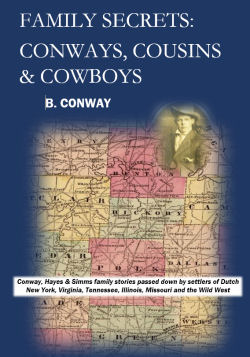
FAMILY SECRETS: CONWAYS, COUSINS & COWBOYS
by BETH CONWAY
Available for Kindle
FAMILY SECRETS & SCANDALS: CONWAYS, COUSINS & COWBOYS
Fans of genealogy, history and PBS’ Finding Your Roots will find “Family Secrets & Scandals” to be an enlightening, rich and meticulously researched read. -- Kindle Reviewer
Conway, Hays & Simms family stories passed down by settlers of Dutch New York, Virginia, Tennessee, Illinois, Missouri and the Wild West
Some people leave flowers on graves to honor their ancestors. Some people show their appreciation for their heritage by speaking for the dead and telling their stories. This book contains some of those stories.
Once upon a time this author embarked on a mission to find the background of a long gone relative named Ben Conway. Records were missing, courthouses burned, descendants had died, and his family history was a mystery. During the quest to locate information on Ben Conway, however, other previously unknown family branches turned up that produced some fascinating anecdotes. The resulting research became a compilation of interwoven stories from the Conway, Hays, Simms and other related families.
Longstanding family legends provided some clues to the Conway heritage. One authenticated story exposed the facts about an adventurous minister who laid the groundwork for the birth of a major Midwest city. Cousins often married cousins in pioneer times, but one branch of the family so passionately believed in "keeping it in the family" that their numerous intermarriages may have sparked the term "kissing cousins."
The attempt to verify the truth about a secret family tragedy unlocked further mysteries of hidden gold, corruption and murder in the Wild West. Starting with one small clue this story unraveled to its inception with people who fought the Indian Wars, traveled the Trail of Tears, and suffered in the Civil War. This saga of the old west, pieced together from the records and recollections of unrelated witnesses, came to a climax with a series of murders in Indian Territory during the lawless 1890s.
History is often nothing more than old gossip. Over time the sediment of old grudges and past glories settles to bedrock where it lies undisturbed and crystallizes into accepted truths. Sifting for truth amongst the loose nuggets of family narratives often uncovers glimpses of a history that textbooks ignore.
Digging deep into family roots revealed the tale of a notorious but well-connected official of 17th century New Amsterdam. He defended his superiors and wielded influence for more than twenty years on behalf of the Dutch West India Company. He also scandalized the inhabitants of early Dutch New York with sexual escapades and murderous attacks on Native Americans. When charged with embezzlement, he went walking along the river in the dark of night and mysteriously disappeared. He was a smooth-talking scoundrel who used his wits to survive but was only a product of his times.
One Irish immigrant in the early 18th century loved this country so much that he risked his life during the Revolutionary War. He sincerely believed that he fought for "life, liberty and the pursuit of happiness." This hardworking idealist signed a petition to establish an independent republic hoping to receive all the rights and representation promised in the shiny new Constitution. The resulting State of Franklin only lasted four years and never earned a star on the U.S. flag. Its story is an overlooked part of U.S. history.
Even those who cannot find a direct connection to these families may feel a kinship since many of these stories are reminiscent of the experiences of their own ancestors. These tales of people who took a gamble by settling in the New World and of people who fostered the westward expansion are the bricks and mortar that built this country’s history.
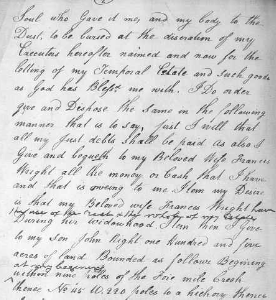 The People and Places
The People and Places
The stories in the book cover 1624 - 1900
NAMES: Clayton, Conway, Hays, Hayes, Hoff, Huff, Johnson, Joplin, Vaughan, Whitehead, Carr, Simms, Van Hook, Van Tienhoven
STATES: Arkansas, Illinois, Indian Territory, Kansas, Kentucky, Missouri, Nebraska, New York, North Carolina, Oklahoma, Tennessee, Texas, Virginia
COUNTIES AND TOWNS : Arkansas: Benton - Washington *** New York: Manhattan, New Amsterdam, New Netherlands - Fort Orange, Manhattan *** North Carolina: Orange County and Alamance County *** Kentucky: Logan County - Russellville *** Tennessee: Greene County and Jefferson County *** Missouri: Greene County, Hickory County, Jasper County, Benton County - Springfield *** Illinois: Marion County - Centralia *** Kansas: *** Nebraska: *** Oklahoma: Indian Territory - Okmulgee *** Texas: Tarrant County - Dallas and Fort Worth *** Virginia: Dinwiddie County and Bedford County - Petersburg
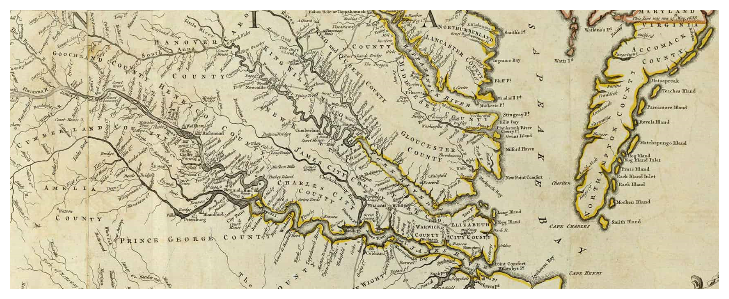
This Conway family came from Virginia, settled in Kentucky and then emigrated to Missouri, Arkansas, Texas, Oklahoma.
This Hays (Hayes) family from Ireland settled in Pennsylvania, Virginia, Tennesee, Illinois, Arkansas, Texas, Kansas, Nebraska
This Simms family came from Virginia, settled in North Carolina, then emigrated to Missouri and Arkansas
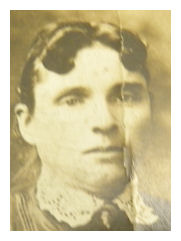 THE AUTHOR
THE AUTHOR
B. Conway developed a passion for family history and genealogy after a professional genealogist shared some family gedcom files more than twenty years ago. Work and family left little time for research and gathering material, but then a computer malfunction destroyed the collection of irreplaceable gedcom files.
When DNA tests became readily available an unusually high percentage of Scandinavian genes on a report created a mystery to solve. Piecing all that information together again from scratch was a daunting task. Armed with a few handwritten notes from a family member who passed on in the early 1970's and a family Bible, the hunt began.
The silver lining was that by doing firsthand research with the latest tools and resources there were opportunities to take side excursions and read a wider variety of relevant material. Stories emerged, and discoveries made that could not have occurred twenty years earlier using a mere set of names and birth dates. These little tales of family history entertained friends and strangers until it became obvious that they were meant for sharing.
B. Conway has one piece of advice for anyone who wants to research their own family tree: "Back up your files and then back them up again!"
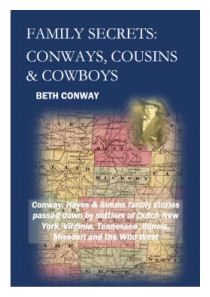 ORDER THE BOOK
ORDER THE BOOK
BUY NOW! KINDLE VERSION
FAMILY SECRETS & SCANDALS: CONWAYS, COUSINS & COWBOYS: Conway, Hays & Simms family stories passed down by settlers of Dutch New York, Virginia, Tennessee, Illinois, Missouri and the Wild West
Family Secrets: Conways, Cousins & Cowboys is the first of a series. There is a collection of stories waiting in the wings that revolve around other family branches and investigates other mysteries. Upcoming tales will include family lore from branches of the Arbogast, Battles, Beauvais, Beeves, Bogardus, Creekmore, Holladay, Lindley, Longstreet, Matheny, Mullanax, Pierce and Webber lineages. These families boast fur trappers and beguiling Indian maidens, civil war generals and revolutionary war heroes, devout Quakers and cautious Catholics. One man was admittedly married four times and had a long list of children, but someone else apparently used his name since there are records showing he fathered dozens of other children without the benefit of matrimony. One family engaged in legal battles over the inheritance of a swampy piece of land for more than 200 years!
Who Was John Clayton?
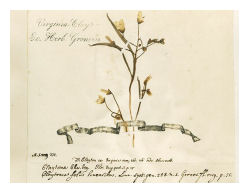 There were two men named John Clayton in early Virginia. The older John Clayton arrived from England with his family sometime after 1715. He held numerous political positions and was appointed as an Attorney General for colonial Virginia. His son, John Clayton, was a famous botanist. He served as the clerk for Gloucester County, Virginia from 1720 until his death in 1773 yet found enough spare time to travel to collect plant specimens, study botany on the side and engage in an immense amount of correspondence with expert botanists around the world. Some of John Clayton’s specimens are still preserved and housed in the Natural History Museum in London within the John Clayton Herbarium.
There were two men named John Clayton in early Virginia. The older John Clayton arrived from England with his family sometime after 1715. He held numerous political positions and was appointed as an Attorney General for colonial Virginia. His son, John Clayton, was a famous botanist. He served as the clerk for Gloucester County, Virginia from 1720 until his death in 1773 yet found enough spare time to travel to collect plant specimens, study botany on the side and engage in an immense amount of correspondence with expert botanists around the world. Some of John Clayton’s specimens are still preserved and housed in the Natural History Museum in London within the John Clayton Herbarium.
William Clayton, one of John Clayton’s sons, was a delegate to the Virginia Ratifying Convention, a group who met in 1788 to ratify or reject the United States Constitution. A part of Virginia State Route 14 that runs through Gloucester County, Virginia is a four lane highway dedicated as the John Clayton Memorial Highway.
Are You Irish?
If so, then your ancestors may have faced persecution and discrimination. The Brooklyn Daily Eagle Brooklyn, New York 18 Nov 1868, p3

In the mid nineteenth century, it is estimated that up to a third of the entire Irish population emigrated to the United States. These people fled the Irish potato famine of 1845-1852 that ravaged the economy and disrupted their country.
“[The Famine] is a punishment from God for an idle, ungrateful, and rebellious country; an indolent and un-self-reliant people. The Irish are suffering from an affliction of God’s providence,”
said Charles Trevelyan, Assistant Secretary to Her Majesty’s Treasury, in 1847. Trevelyan was given a knighthood in 1848 for overseeing Britain’s mostly indifferent and ineffectual famine relief.
This disdainful attitude towards the Irish was firmly entrenched in British society and pointedly mocked more than a century earlier by satirist Johnathan Swift in his famous essay known as “A Modest Proposal.” The full title is, “A Modest Proposal For preventing the Children of Poor People From being a Burthen to Their Parents or Country, and For making them Beneficial to the Publick.” In the essay, published anonymously in 1729, Swift suggested that selling their children to the rich would offer an easy solution to the plight of the poor Irish.
"A young healthy child well nursed, is, at a year old, a most delicious nourishing and wholesome food, whether stewed, roasted, baked, or boiled; and I make no doubt that it will equally serve in a fricassee, or a ragout."
In the United States the frequent appearance of “Irish Need Not Apply” signs were matched with newspaper editorials that raged against “papal aggression” and lobbied for laws that limited voting to citizens with twenty-one years of residence.
Aging Outlaws of the Wild West
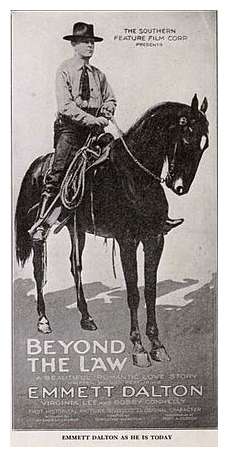 Aging outlaws such as Emmett Dalton had to clean up their act and make a living once the wild wild west was tamed (and they were released from prison). Some of them capitalized on nostalgia. And who knew that the term "dudes" has been around for more than 100 years? In 1911 Emmett Dalton said,
Aging outlaws such as Emmett Dalton had to clean up their act and make a living once the wild wild west was tamed (and they were released from prison). Some of them capitalized on nostalgia. And who knew that the term "dudes" has been around for more than 100 years? In 1911 Emmett Dalton said,
" There is only one thing in the world that equals a manly man, and that is a womanly woman. The world is full of dudes and butterflies, but men and women are at a premium. "
Scout Younger kept up abreast of the times and when silent movies became the latest fad, he began producing films for display at theaters, one of which was “The Daltons” with a presentation that included a personal appearance by Emmett Dalton. Younger knew many of the old west outlaws and incorporated them into his movies and exhibits.
John Tackett, the photographer who famously snapped the photos of four dead Dalton gang members in Coffeyville, Kansas, collaborated with Emmett Dalton in a film about the famous raid. He later teamed up with Scout Younger to make a western movie in Tulsa, while Emmett went on to make a new version of his moving pictures. It first appeared in 1911 under the title “The Last Raid of the Dalton Gang” and in 1912 it was released as “The Last Stand of the Dalton Boys” and later still it was called “The True Life History of the Dalton Boys."
It's Genealogy, So Spelling Doesn't Matter
Turn your spell checker off ! Your ancestors didn't use them!
Ben Conway’s middle name was Seymour. It’s genealogy, so spelling doesn’t matter. There are records where Seymour is variously spelled Seymore, Seemore, Semore, Seamore, Cemore and Ceemore.
There are Hays, Hayes and Haze, Wrights and Rights, Vaughans and Vons. Van Hoeckziel was shortened to Van Hoeck and then became Van Hook.
Another ancestor in the deep South named Roseanne was difficult to trace until it was discovered that her name had been entered on a census form as “Raisin.” You can almost hear the woman, speaking with a pronounced southern drawl, telling the census taker her name!
If it was good enough for the person and his family it should be good enough for you. Eliga McDonough Hays spelled his first name with a “g” and that is etched right on his headstone. This is genealogy and the spelling doesn’t matter.
 ORDER THE BOOK
ORDER THE BOOK  There were two men named John Clayton in early Virginia. The older John Clayton arrived from England with his family sometime after 1715. He held numerous political positions and was appointed as an Attorney General for colonial Virginia. His son, John Clayton, was a famous botanist. He served as the clerk for Gloucester County, Virginia from 1720 until his death in 1773 yet found enough spare time to travel to collect plant specimens, study botany on the side and engage in an immense amount of correspondence with expert botanists around the world. Some of John Clayton’s specimens are still preserved and housed in the Natural History Museum in London within the John Clayton Herbarium.
There were two men named John Clayton in early Virginia. The older John Clayton arrived from England with his family sometime after 1715. He held numerous political positions and was appointed as an Attorney General for colonial Virginia. His son, John Clayton, was a famous botanist. He served as the clerk for Gloucester County, Virginia from 1720 until his death in 1773 yet found enough spare time to travel to collect plant specimens, study botany on the side and engage in an immense amount of correspondence with expert botanists around the world. Some of John Clayton’s specimens are still preserved and housed in the Natural History Museum in London within the John Clayton Herbarium. 
 Aging outlaws such as Emmett Dalton had to clean up their act and make a living once the wild wild west was tamed (and they were released from prison). Some of them capitalized on nostalgia. And who knew that the term "dudes" has been around for more than 100 years? In 1911 Emmett Dalton said,
Aging outlaws such as Emmett Dalton had to clean up their act and make a living once the wild wild west was tamed (and they were released from prison). Some of them capitalized on nostalgia. And who knew that the term "dudes" has been around for more than 100 years? In 1911 Emmett Dalton said, 
 The People and Places
The People and Places 
 THE AUTHOR
THE AUTHOR